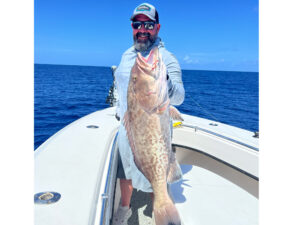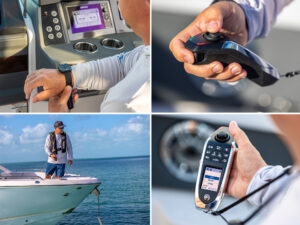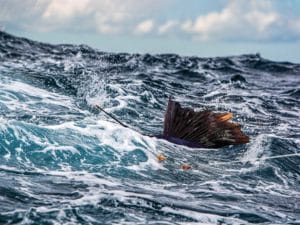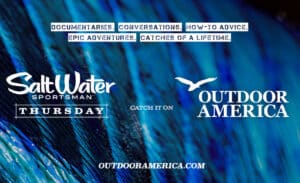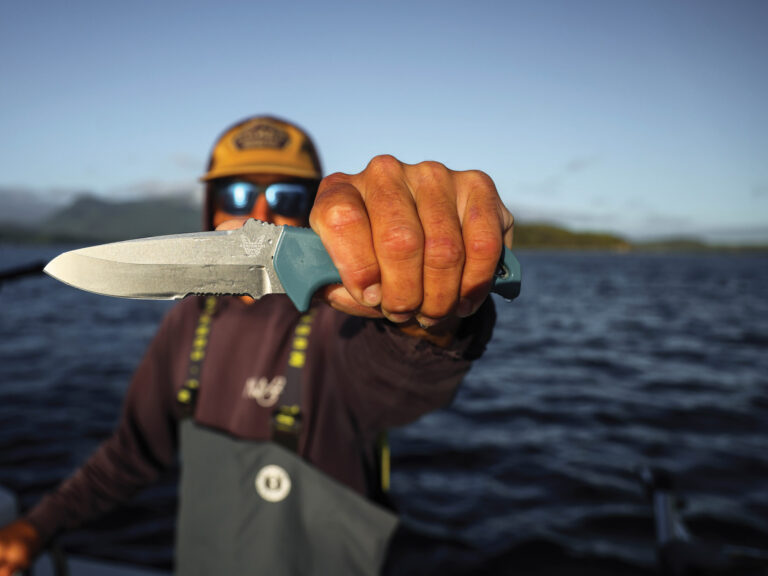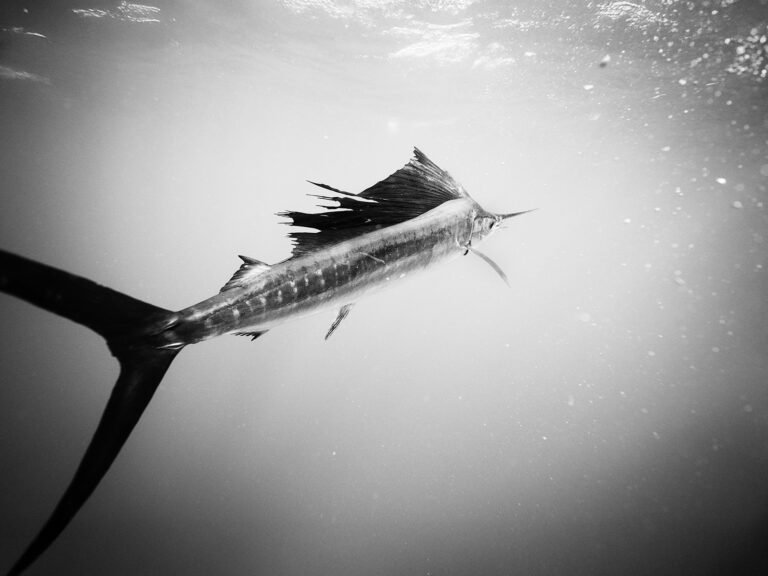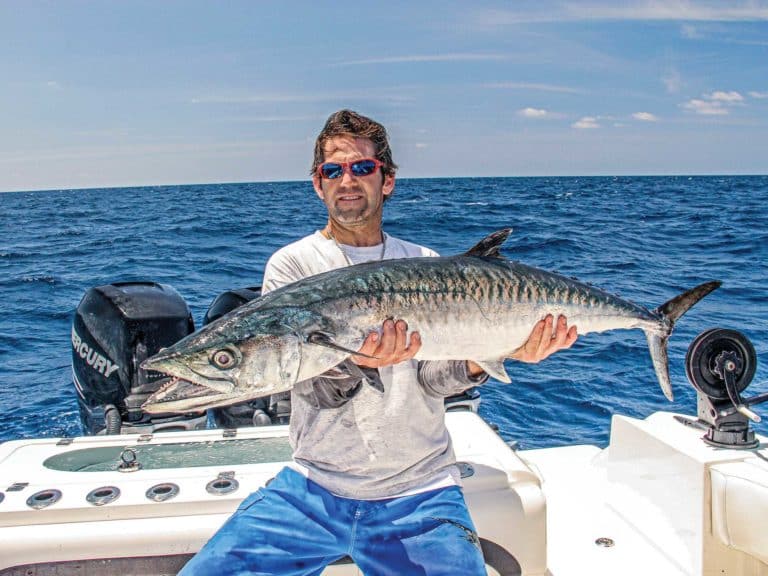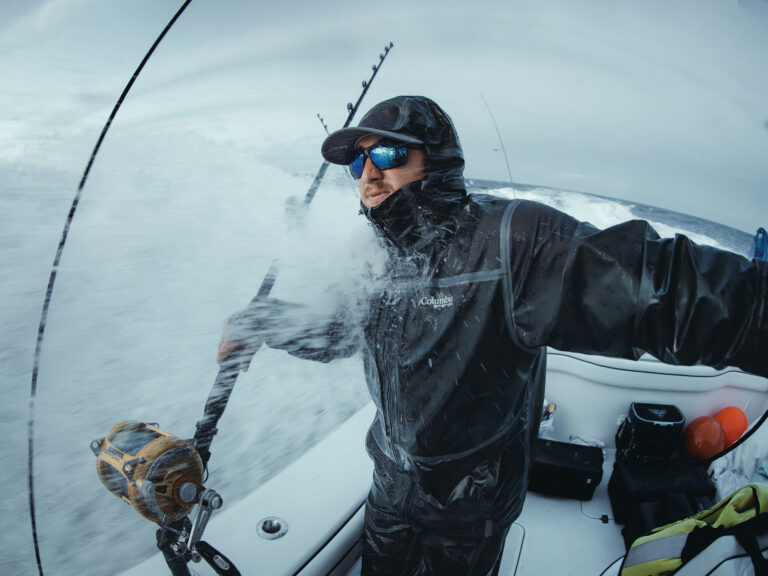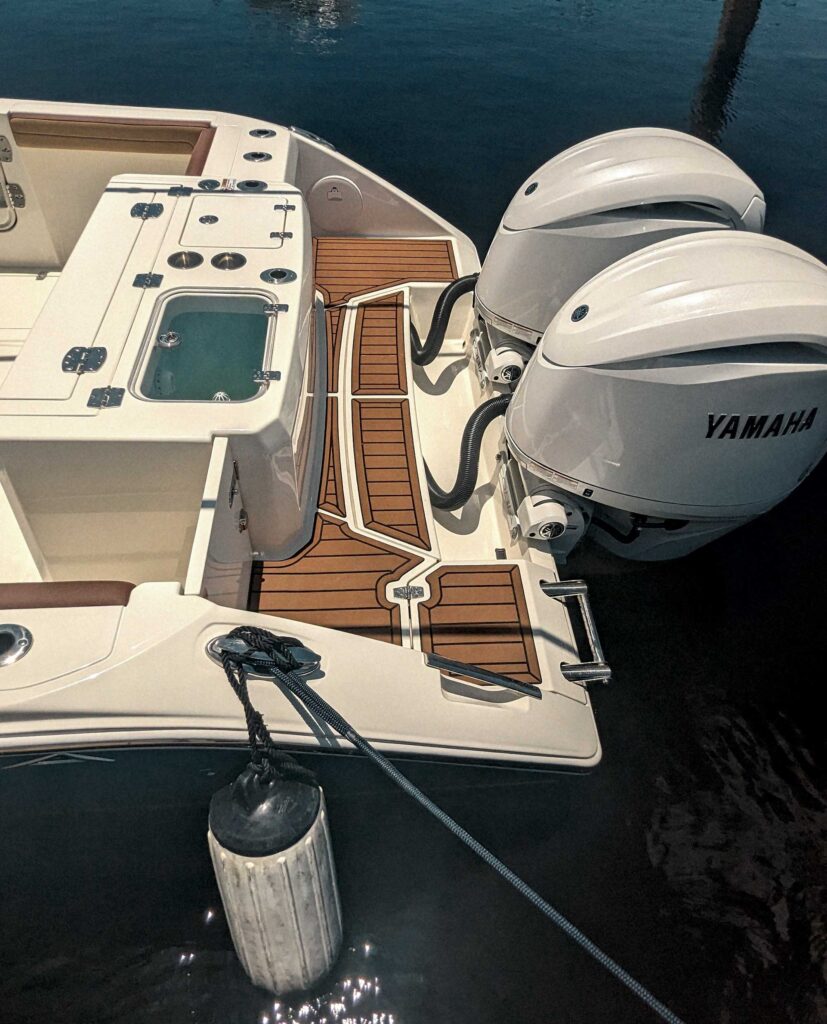
Today’s center-console boats are incredible fishing machines. If you are considering a new one, here are seven features you should look for, elements that indicate the boatbuilder is paying attention to details. They are the kind of features that make a good boat a great one.
1. Magnets
Although magnets have been used for eons, boatbuilders are still discovering new ways to employ them. The first place they appeared on boats was to hold swinging doors and the walk-through windshield panel open. But now magnets are also used to replace snaps for upholstered seat cushions. This eliminates the minefield of snaps left behind when a cushion is removed, which looks ugly and is hard on bare feet. On a boat I tested recently, there were 35 snaps holding the stern bench cushions in place, which was a problem because the bench doubled as a casting platform when the cushions were removed.
At the 2024 Fort Lauderdale International Boat Show, I boarded a Solace 28 HCB that used magnets to hold cushions in place. Magnets were even embedded under the gunwales to hold fishing tools like pliers securely. There is a downside: Solace Boats founder Stephen Dougherty said the special magnets cost about $80 apiece.
– WEAR A LIFE JACKET –
Safety Tip Provided by the U.S. Coast Guard
Everyone, even strong swimmers, needs to wear a life jacket at all times when on the water. It is extremely difficult to put a life jacket on once you fall into the water. Even a light wind can blow any paddlecraft away from you, faster than you can swim.
2. Windshield Vents
Traditionally, the downside to center-console boats has been the lack of crew protection from wind, spray and rain. Today, boatbuilders are increasingly offering boats with full windshields and side windows to remedy this. But the lack of airflow can be stifling on hot days, especially if you are slow-trolling.
The easiest solution is to add a vent at the top of the windshield to create some breeze. Another issue with windshields happens on rougher days when spray spackles the glass, making the search for birds and weed lines more difficult.
My old 1968 Stamas had flip-up windshields, which was a low-tech way to handle this issue, but that feature only appears on a few models, like the Robalo R30, which does it electronically. A few boat companies, such as Everglades, have retractable windshields on select models like the 273CC, which is the gold standard for solving the problem of adding ventilation while preserving vision.
3. Grab Rails
When it gets rough, and I’m not driving, I usually gravitate to a position behind the leaning post, where there’s relief from the wind and it’s not as splashy as sitting on the stern bench. I like standing to let my legs act as shock absorbers, but often there’s no grab rail, so I have to hold onto a rocket-launcher rod holder or the back of the captain’s seat. Sometimes, there is a rigging station or a summer kitchen with nothing to hold on to. The best solution is a horizontal grab rail just above waist-high. The next-best solution is a handhold add-on to a vertical T-top support tube. Recessed grab rails around the boat’s perimeter and near seats also improve safety.
Read Next: Best Boat Trolling Motor Features for Saltwater Fishing

4. Boarding Assists
When I was at the most recent 2025 Miami International Boat Show, the marina had old-school fixed docks, which can be a problem for boarding when the tide is low. I have a bad knee, so sometimes I sit on the dock and shimmy down to the gunwale. In these situations, having a hardtop with grab rails is a big plus. As a bonus, they do double duty by creating a tie-down point if you want to bring along a kayak or stand-up paddleboard, or stow and secure a beanbag seat overhead.
Another low-tech assist is a boarding handle that temporarily fits inside a rod holder to create a handhold. Yet another nice-to-have feature for boats with high gunwales is a foldout step. Side doors not only help those boarding, but can also help land extra-large fish.
– LOWER YOUR RATES –
Safety Tip Provided by the U.S. Coast Guard
Taking a boating safety course won’t just make you a better skipper. It could also help you save big on insurance.
5. Walk-Across Transoms
Often, outboard rigging and engine splashwells don’t allow anyone to walk from side to side behind the transom, which can be a problem when fighting a fish intent on tangling the line on the lower unit. For boats with abbreviated swim platforms, boarding the boat is more challenging, and it’s difficult to service a prop on the water, like when a crab-trap line gets wrapped around it.
Buying a boat with electric steering built into the outboard does away with hydraulic lines, decluttering the transom. You also can choose a boat model with a pathway across the back to help the crew tie up the boat at the dock. Swim platforms with long side extensions make it easy for people to board and can help reach a prop when afloat.
6. Auto-Trim Systems
Many longtime boaters scoff at features like auto-trim or automatic trim tabs, but recent innovations like Seakeeper’s Ride system can make 100 corrections a second to keep a boat running level and the bow from bouncing up and down, which even the most skilled captain can’t replicate.
Other systems such as Zipwake use bladelike interceptors to automatically keep a boat on an even keel, and Mercury’s Active Trim keeps engine trim dialed in when turning. Even if you are a trim-tab and engine-trimming whiz, other guests on board—who might have to drive your boat during an emergency—probably are not.
– UPGRADE YOUR RADIO –
Safety Tip Provided by the U.S. Coast Guard
Digital Select Calling (DSC) allows you to transmit your precise location with the press of a button. Make sure your VHF radio has it, and don’t forget to get your MMSI number. It might just save your life.
7. Joystick Control
Some seasoned boaters view joystick docking systems as crutches for newbies who can’t drive a boat, but joysticks go far beyond helping to dock a boat in a crowded marina with wind and tide. Systems like Yamaha’s Helm Master EX take automatic boat positioning to a new level with StayPoint, DriftPoint and FishPoint. Helm Master EX can orient your boat in whatever direction you want and interface with the autopilot to run a set course, steer the boat in various patterns, or take complete control of its position during drift-fishing.
Most joystick systems have a virtual anchoring system that holds a boat in place, which is helpful when waiting for a bridge to open or fishing on a reef or wreck without deploying an actual anchor. Expensive? Sure, but systems like Mercury’s Joystick Piloting for Outboards make boating and fishing less stressful and more enjoyable.
When buying a boat, look for features that make your specific brand of fishing and boating easier and more pleasurable.

